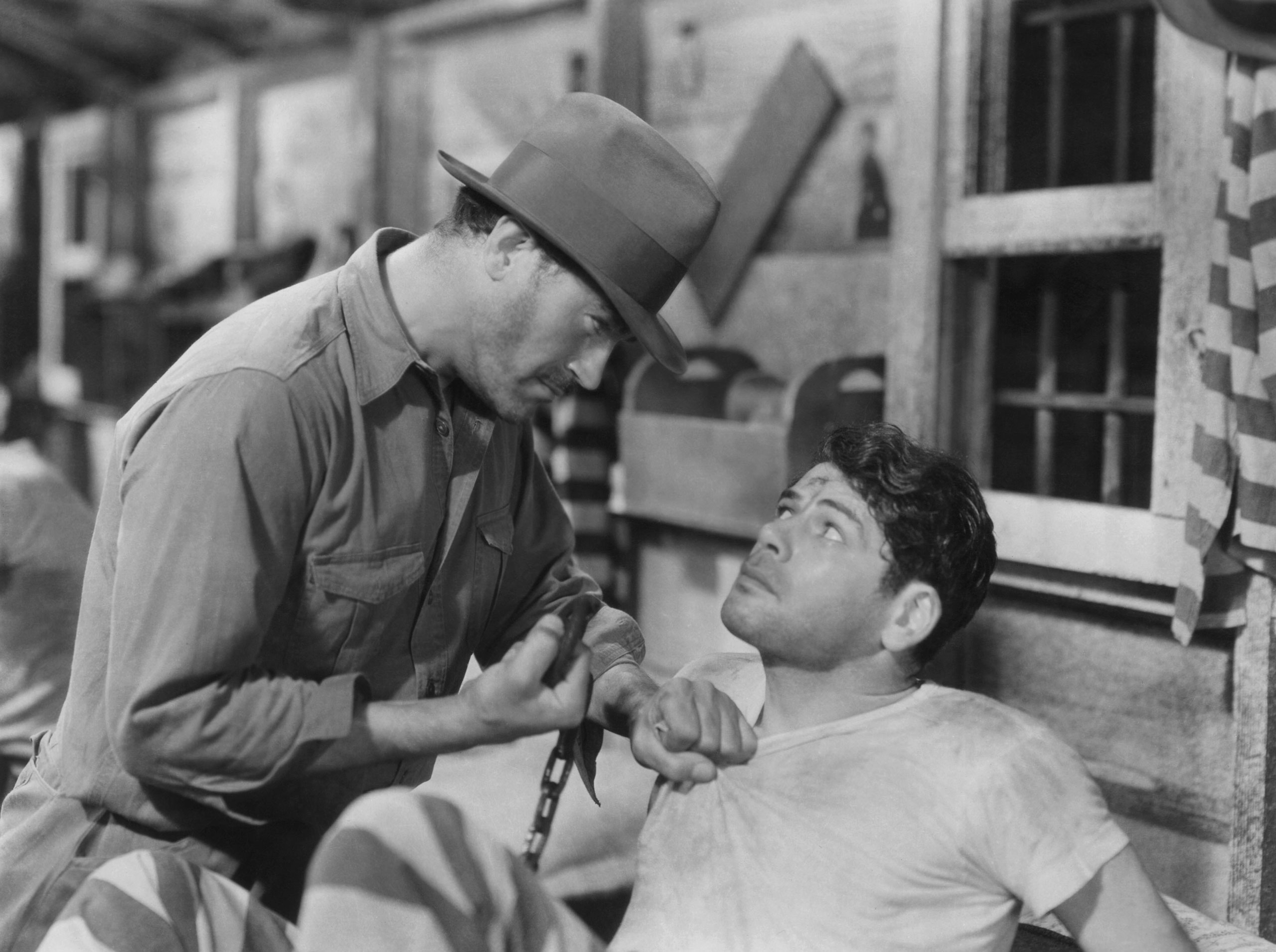In the 1930s, Warner Bros. was the scrappiest studio, specializing in jagged gangster films (Scarface, The Public Enemy) and escapist musicals with a social conscience (42nd Street, Gold Diggers of 1933) alike. It was a studio deeply in tune with a country in the dumps, and one of its signature pictures was the muckraking social-issues drama I Am a Fugitive from a Chain Gang, made by the prolific journeyman director Mervyn LeRoy. Paul Muni, one of the decade’s most respected and sought-after stars, is James Allen, a World War I veteran who, having gained engineering experience in the service, returns home hoping to launch a career in construction. But he hits the skids after being laid off from one job after another, through no fault of his own. And his luck takes an even more drastic nosedive when, after becoming an unwilling accomplice in a violent crime, he’s sentenced to several years of hard labor in a camp located in an unnamed Southern state, though we can be pretty sure it’s Georgia. The camp conditions are brutal, as they were at the time in real life. With the help of a fellow inmate (Edward Ellis’ Bomber, a feisty agitator who’s earned his nickname) Allen escapes and, after years of determination and study, builds a solid engineering career for himself, becoming a model citizen—until the long arm of the law snatches him back. I Am a Fugitive was based on a true story, and one of the chain-gang wardens depicted in the film, J. Harold Hardy, took the movie so seriously he sued the studio for a million dollars. Its impact endures: I Am a Fugitive features one of the bleakest endings of its era, one that hasn’t lost its ominous power.
- The 100 Most Influential People of 2024
- Coco Gauff Is Playing for Herself Now
- Scenes From Pro-Palestinian Encampments Across U.S. Universities
- 6 Compliments That Land Every Time
- If You're Dating Right Now, You're Brave: Column
- The AI That Could Heal a Divided Internet
- Fallout Is a Brilliant Model for the Future of Video Game Adaptations
- Want Weekly Recs on What to Watch, Read, and More? Sign Up for Worth Your Time
